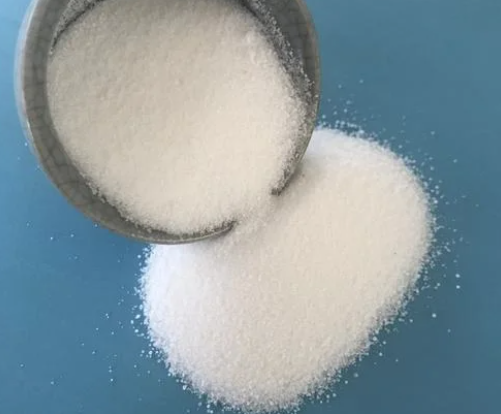Hydroxyethyl starch: Uses, Elimination, and Side effects
Introduction
Hydroxyethyl starch (HES) is a hydrolyzed and hydroxyethylated derivative of the natural cornstarch amylopectin, dissolved in normal saline or other balanced solvents. It has been developed to serve as an alternative colloid to albumin.

HES is a non-ionic starch derivative frequently used as a volume expander under various trade names. HES is a broad category and can be sub-classified according to average molecular weight (i.e. 130–200 kDa), molar substitution (i.e. the proportion of glucose units replaced by HES units), concentration (grams/dl), and maximum daily dosage. It has become the most commonly used colloid in intensive care unit (ICU) patients. In recent years, there has been a constant increase in the use of HES peri-operatively. HES solutions have gained popularity because of their efficacy as volume expanders in treating hypovolemic patients compared to crystalloids.
Uses
HES is a synthetic carbohydrate polymer marketed as a volume expander in different molecular weights and degrees of substitution.
More than 20 different HES solutions from several manufacturers are available in the European Union, and more than 30 preparations are available worldwide.
HES has been used in a variety of clinical settings, including during surgery and to treat hypovolaemia after trauma, burns, and sepsis, despite a lack of evidence of clinical benefit compared with other intravenous fluids such as albumin and crystalloids[1].
Mechanism of action
Hydroxyethyl starch is a synthetic colloid volume expander used to maintain vascular volume in animals with circulatory shock. It is a modified branched-chain glucose polymer derived from amylopectin sources such as potatoes, sorghum, or maize. The hydroxyethyl starch preparations include tetrastarch, hetastarch, and pentastarch. Hetastarch (6%) has an average molecular weight of 200 kDa (kilodaltons) and a colloid osmotic pressure of approximately 30. Pentastarch (10%) has an average molecular weight of 200 kDa and a colloid osmotic pressure of 30-60. Tetrastarch (VetStarch) 6% has a molecular weight of 130 kDa and a colloid osmotic pressure of 36. The number of molecular substitutions determines whether it is hetastarch, pentastarch, or hexastarch. Hetastarch has the most molecular substitutions and tends to remain the longest in the vasculature. Hetastarch is cleared much more slowly than tetrastarch. The advantage of synthetic colloids such as hydroxyethyl starch is that when administered IV, they produce oncotic pressure in the vascular compartment, which prevents migration of fluid replacement to the interstitial compartment. Although hetastarch is prevented from hydrolysis in blood, thereby prolonging intravascular expansion, this property is also associated with accumulation in the reticuloendothelial system, skin, liver, and kidney.
Elimination
The primary route of eliminating HES solutions is via renal excretion (70%). A secondary route of elimination occurs via the reticuloendothelial cells of the liver, spleen, and lymph nodes when HES leaks into the tissues. A third route of elimination occurs via biliary excretion. Most studies examining the use of HES solutions differ in the dose, type, concentration, and specific population investigated. Additionally, there may be species-specific differences in small animals compared to the data extrapolated from human medicine[2].
Eliminating HES from the body depends on the degree of molar substitution. Molecules smaller than the renal threshold (60–70 kDa) are excreted in urine. Larger molecules are metabolized by α–amylase before degradation products are excreted by the kidneys. However, it is essential to note that HES is only partially degraded and excreted from the body. The precise mechanism of HES metabolism is still unclear. Approximately one-third to two-thirds of HES administered cannot be accounted for in the 24-h urinary excretion. Only 50% of the administered dose was found to be excreted over 72 h in one study. Studies have reported HES accumulation in plasma and several other tissues with worrisome persistence for prolonged periods running into several years.
Side effects
The adverse effects associated with HES solution administration occur as the result of cumulative dose rather than the daily infusion dose; these side effects include acute kidney injury (AKI), coagulopathy, pro-inflammatory effects, anaphylaxis, and volume overload. Foamy macrophage syndrome and delayed onset pruritus have been reported in humans after administering HES solutions; however, these effects have not been reported in the veterinary literature.
References:
[1] CHRISTIANE S HARTOG. Concerns over use of hydroxyethyl starch solutions.[J]. BMJ?: British Medical Journal, 2014. DOI:10.1136/bmj.g5981.[2] AVSM S V A S K, NM, VSM. Clinical use of hydroxyethyl starch and serious adverse effects: Need for awareness amongst the medical fraternity[J]. Medical Journal Armed Forces India, 2014, 70 3: 205-304. DOI:10.1016/j.mjafi.2014.06.002.
You may like
See also
Lastest Price from Hydroxyethyl starch manufacturers

US $0.00/Kg/Drum2025-04-21
- CAS:
- 9005-27-0
- Min. Order:
- 1KG
- Purity:
- 98.5%min; EP;130/0.4 or 200/0.5
- Supply Ability:
- 1000kg

US $10.00/KG2025-04-21
- CAS:
- 9005-27-0
- Min. Order:
- 100KG
- Purity:
- 99%
- Supply Ability:
- 100 mt


